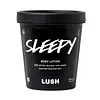What's inside
What's inside
 Key Ingredients
Key Ingredients

No key ingredients
 Benefits
Benefits

 Concerns
Concerns

 Ingredients Side-by-side
Ingredients Side-by-side

Avena Sativa Kernel Extract
AbrasiveMilk
Skin ConditioningPrunus Amygdalus Dulcis Oil
Skin ConditioningLavandula Angustifolia Flower Water
Skin ConditioningLavandula Angustifolia Flower
Skin ConditioningSimmondsia Chinensis Seed Oil
EmollientGlycerin
HumectantTheobroma Cacao Seed Butter
EmollientStearic Acid
CleansingIllipe Butter
Skin ConditioningTriethanolamine
BufferingLavandula Angustifolia Oil
MaskingStyrax Benzoin Gum
MaskingDipteryx Odorata Seed Extract
MaskingViola Odorata Oil
MaskingCetearyl Alcohol
EmollientBenzyl Benzoate
AntimicrobialBenzyl Cinnamate
PerfumingCoumarin
PerfumingGeraniol
PerfumingLimonene
PerfumingLinalool
PerfumingParfum
MaskingSynthetic Fluorphlogopite
Titanium Dioxide
Cosmetic ColorantTin Oxide
AbrasiveCI 45380
Cosmetic ColorantBlue 1 Lake
Cosmetic ColorantAvena Sativa Kernel Extract, Milk, Prunus Amygdalus Dulcis Oil, Lavandula Angustifolia Flower Water, Lavandula Angustifolia Flower, Simmondsia Chinensis Seed Oil, Glycerin, Theobroma Cacao Seed Butter, Stearic Acid, Illipe Butter, Triethanolamine, Lavandula Angustifolia Oil, Styrax Benzoin Gum, Dipteryx Odorata Seed Extract, Viola Odorata Oil, Cetearyl Alcohol, Benzyl Benzoate, Benzyl Cinnamate, Coumarin, Geraniol, Limonene, Linalool, Parfum, Synthetic Fluorphlogopite, Titanium Dioxide, Tin Oxide, CI 45380, Blue 1 Lake
Theobroma Cacao Seed Butter
EmollientCalcite Powder
Butyrospermum Parkii Butter
Skin ConditioningOdontioda Lavender Lace Flower Extract
HumectantParfum
MaskingIllipe Butter
Skin ConditioningMagnesium Chloride
Passiflora Cincinnata Seed Oil
Skin ConditioningLinalool
PerfumingLavandula Angustifolia Oil
MaskingChamomilla Recutita Oil
MaskingCitrus Aurantium Dulcis Oil
MaskingWater
Skin ConditioningBenzyl Alcohol
PerfumingBenzyl Benzoate
AntimicrobialBenzyl Cinnamate
PerfumingCinnamal
PerfumingCoumarin
PerfumingEugenol
PerfumingGeraniol
PerfumingLimonene
PerfumingTheobroma Cacao Seed Butter, Calcite Powder, Butyrospermum Parkii Butter, Odontioda Lavender Lace Flower Extract, Parfum, Illipe Butter, Magnesium Chloride, Passiflora Cincinnata Seed Oil, Linalool, Lavandula Angustifolia Oil, Chamomilla Recutita Oil, Citrus Aurantium Dulcis Oil, Water, Benzyl Alcohol, Benzyl Benzoate, Benzyl Cinnamate, Cinnamal, Coumarin, Eugenol, Geraniol, Limonene
Ingredients Explained
These ingredients are found in both products.
Ingredients higher up in an ingredient list are typically present in a larger amount.
Benzyl Benzoate is usually created from the condensation of benzoic acid and benzyl alcohol. It is used as a preservative, solvent, and has a floral/balsamic scent in large amounts.
As a preservative, Benzyl Benzoate works against bacteria and fungus. It is often used to treat scabies and lice in medicine.
Solvents are used to keep ingredients together in a product. They can help dissolve ingredients to stable bases or help evenly distribute ingredients throughout the product.
Due to its fragrance, Benzyl Benzoate can be sensitizing and may cause contact dermatitis. It is a known EU allergen. We recommend speaking with a professional if you have any concerns.
Benzyl Benzoate can be naturally found in cranberries and peaches.
Learn more about Benzyl BenzoateBenzyl Cinnamate is a fragrance. It is derived from cinnamic acid and Benzyl alcohol.
As a known EU allergen, benzyl cinnamate is likely to cause an allergic reaction when applied to the skin.
Coumarins are a group of substances found naturally in plants. There are over 1300 types of coumarins identified. It has a natural vanilla scent.
Coumarin is an identified EU known allergy, meaning it may cause an allergic reaction when applied to the skin.
In many countries, coumarin is banned as a food additive. However, it can be found in soaps, tobacco products, and some alcohol drinks.
Plants use coumarins as a chemical defense. Some plants that have coumarins include lavender, tonka beans, and yellow clovers.
Learn more about CoumarinGeraniol is used to add fragrance/parfum to a product. It is the main component of citronellol. It is a monoterpenoid and an alcohol.
Monoterpenes are naturally found in many parts of different plants.
Geraniol can be found in many essential oils including Rose Oil and Citronella Oil. The scent of Geraniol is often described as "rose-like". Many foods also contain Geraniol for fruit flavoring.
Geraniol can irritate the skin when exposed to air. However, irritation depends on the ability of geraniol to penetrate into the skin. In general, geraniol is not able to penetrate skin easily.
Geraniol is colorless and has low water-solubility. However, it is soluble in common organic solvents.
Like citronellol, it is a natural insect repellent.
2,6-Octadien-1-ol, 3,7-dimethyl-, (2E)-
Learn more about GeraniolIllipe Butter isn't fungal acne safe.
Lavandula Angustifolia Oil is more commonly known as lavender essential oil. It is considered a fragrancing ingredient.
Lavender imparts a famous scent. While the smell is lovely, this ingredient and may sensitize skin in topical products. This is because about 85% of the oil is made up of linalool and linalyl acetate.
When exposed to air, these two compounds become strong allergens. This ingredient exhibits cytotoxicity at low concentrations; amounts of 0.25% have been shown to damage skin cells.
A study from Japan found this ingredient caused lavender sensitivity after widespread exposure.
Lavender essential oil has some antimicrobial, antibacterial, and anti-inflammatory properties. However, the cons of this ingredient may outweight the pros.
More research is needed to confirm lavender essential oil's effects when used in aromatherapy.
Lavandula Angustifolia is known as the English Lavender and famous for creating purple fields in Provence, France.
Learn more about Lavandula Angustifolia OilLimonene is a fragrance that adds scent and taste to a formulation.
It's found in the peel oil of citrus fruits and other plants such as lavender and eucalyptus. The scent of limonene is generally described as "sweet citrus".
Limonene acts as an antioxidant, meaning it helps neutralize free radicals.
When exposed to air, oxidized limonene may sensitize the skin. Because of this, limonene is often avoided by people with sensitive skin.
The term 'fragrance' is not regulated in many countries. In many cases, it is up to the brand to define this term. For instance, many brands choose to label themselves as "fragrance-free" because they are not using synthetic fragrances. However, their products may still contain ingredients such as essential oils that are considered a fragrance.
Learn more about LimoneneLinalool is a fragrance and helps add scent to products. It's derived from common plants such as cinnamon, mint, citrus, and lavender.
Like Limonene, this ingredient oxidizes when exposed to air. Oxidized linalool can cause allergies and skin sensitivity.
This ingredient has a scent that is floral, spicy tropical, and citrus-like.
Learn more about LinaloolParfum is a catch-all term for an ingredient or more that is used to give a scent to products.
Also called "fragrance", this ingredient can be a blend of hundreds of chemicals or plant oils. This means every product with "fragrance" or "parfum" in the ingredients list is a different mixture.
For instance, Habanolide is a proprietary trade name for a specific aroma chemical. When used as a fragrance ingredient in cosmetics, most aroma chemicals fall under the broad labeling category of “FRAGRANCE” or “PARFUM” according to EU and US regulations.
The term 'parfum' or 'fragrance' is not regulated in many countries. In many cases, it is up to the brand to define this term.
For instance, many brands choose to label themselves as "fragrance-free" because they are not using synthetic fragrances. However, their products may still contain ingredients such as essential oils that are considered a fragrance by INCI standards.
One example is Calendula flower extract. Calendula is an essential oil that still imparts a scent or 'fragrance'.
Depending on the blend, the ingredients in the mixture can cause allergies and sensitivities on the skin. Some ingredients that are known EU allergens include linalool and citronellol.
Parfum can also be used to mask or cover an unpleasant scent.
The bottom line is: not all fragrances/parfum/ingredients are created equally. If you are worried about fragrances, we recommend taking a closer look at an ingredient. And of course, we always recommend speaking with a professional.
Learn more about ParfumTheobroma Cacao Seed Butter comes from the Theobroma cacoa, or Cacao tree. Cacao trees are native to tropical landscapes.
Like other plant butters, Cacao seed butter is an emollient. Emollients help soothe and soften your skin. By creating a barrier to trap moisture in, emollients help keep your skin hydrated.
Cacao seed butter contains antioxidants known as polyphenols. Antioxidants help fight free-radical molecules by stabilizing them. Unstable free-radicals may cause damage to your skin cells. Antioxidants may help with anti-aging.
Theobroma Cacao Seed Butter can be bad for acne prone skin.
Learn more about Theobroma Cacao Seed Butter